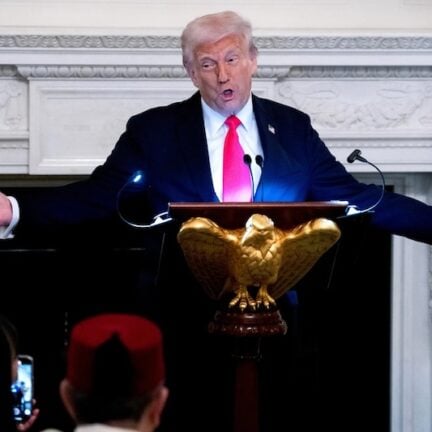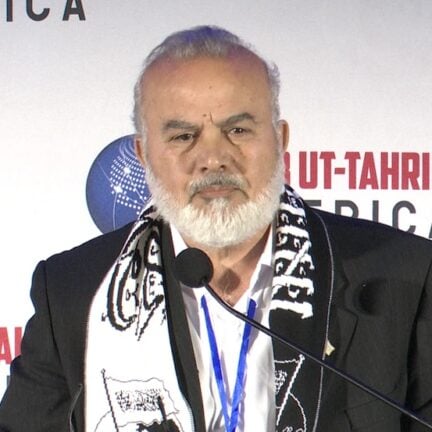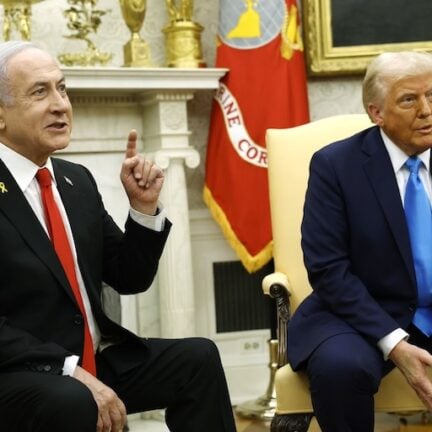Question: On August 15, 2017, the Taliban sent an open letter to the US President calling for the withdrawal of US forces from Afghanistan, and not to increase US forces: “The Taliban movement called on President Donald Trump to withdraw his forces completely from Afghanistan, And warned him in an open letter from increasing the number of US troops in this country that is undefeatable by Washington …” (Source: Novosti – RT- Russia Today, 15/8/2017). This came in response to Trump’s intention of a new strategy in Afghanistan, which the Taliban are afraid that it may include the sending of new troops, as escalated statements from officials of the White House that this new strategy will be soon. The site quoted on 10/8/2017 Trump’s statement to reporters: That his administration is “very close” to adopting a new strategy for Afghanistan … he added: “It’s a very big decision for me. I took over a mess and we’re going to make it a lot less messy.” .” Does this mean that America is serious about developing a new strategy In Afghanistan? Will it include sending new troops or activating the Pakistani or the Indian role in Afghanistan without sending new US troops? Jazakum Allah Khair.
Answer: Yes, it can be said that today America is thoroughly reviewing its strategy in Afghanistan and perhaps it can find the guidance to what it calls “the last stage” of its intervention in Afghanistan. Trump is angry at the military leadership in Afghanistan. Reuters reported on 3/8/2017 a heated meeting that took place between the US president, Trump, and US military officers in Washington: There was great tension during the meeting when Trump said that the Secretary of Defense James Mattis and Joint Chiefs of Staff General Joseph Dunford must discuss the removal of General John Nicholson, commander of US forces in Afghanistan, because he did not win the war. Thus, Trump shows his doubts on the American war in Afghanistan. The Obama administration also reviewed and amended its US strategy for Afghanistan, but the revision by the Trump administration today is special because it is taking place in a circumstance of exacerbating international problems for America and its place in the world; this is detailed as follows:
First: America declared its war on Afghanistan in late 2001 under pretexts to respond to the September 11 attack, driven by neo-conservatives who surrounded the small Bush administration. After less than two years, America attacked Iraq and occupied it, sank in its sands and sought help to get out. With America’s failure in Iraq, its war in Afghanistan became less important, and it focused its efforts on getting out of the Iraqi quagmire after Iraq and Iraqi resistance became the main concern of the Bush administration and later on the Obama administration. With the Obama administration successfully taking out most of the US combat troops from Iraq in late 2011, America has adopted a new strategy to deal with China’s rise. This issue dominated the second phase of the Obama administration and before the US strategy was completed and even during its preparation and crystallization, America’s influence in the Arab region was shaken by the Arab Spring revolutions, especially in Syria. America has been spreading its efforts to combat the dangers of revolutions in the Arab region, especially Syria as well as against China in the Far East.
America declared its rejection to the Chinese islands and worked to revive the Japanese military and proceeded in the path of provoking North Korea. Because of this and because the US casualties in Afghanistan were not serious, America’s war in Afghanistan was given less attention by America although this does not show the neglect as much as it shows the fact that new priorities have become the center of American attention.
Second: During the long 16-year war in Afghanistan, it can be definitely said that the US and NATO armies, that participated with it in the war, failed miserably to root out the Afghan resistance, primarily the Taliban, which was ousted in 2001 by the American intervention. It is also possible to assert that all American options for the stability of its agents in Afghanistan have also failed; India, which America introduced to Afghanistan in terms of stopping what America calls the rebellion, did not benefit it. . In addition, it did not benefit much from the war, waged by its agents in Pakistan on Waziristan and others, to try to alleviate America’s losses in Afghanistan, and there was no progress in the reconciliation efforts with the Taliban. Therefore, America’s situation in Afghanistan seems bleak after 16 years of war. The Taliban are moving freely in large areas of Afghanistan, and the puppet government in Kabul has no influence over it. The movement is carrying out strong and terrifying attacks in most of Afghanistan, including Kabul, where the US military has not succeeded in imposing security, but many attacks, which have been launched against US forces, were by the members of the Afghan army trained by Washington; thus, the US options in Afghanistan are narrow.
In its description of the Afghan reality today and its dangers, the Carnegie Endowment for International Peace report (22/5/2017) stated “…the combination of a weakening Afghan regime and an unchecked Taliban resurgence could lead to the catastrophic collapse of the Afghan government and state, resulting in either a return to anarchy or the recrudescence of terrorist groups.” That report stresses that the Afghan conflict must end not only because it costs America $23 billion a year, but because of the narrow options for a solution in Afghanistan.
Despite the withdrawal of many American armies from Afghanistan under President Obama, leaving only about 10,000 troops, supported by 3,000 NATO troops as well as 20,000 troops from US security companies, that withdrawal was never resulting from any victory or any progress. The Taliban occupies the bases cleared by the US military quickly, and it does not appear that the army of the puppet Afghan government works effectively outside the capital Kabul despite its large number and the many American efforts to train it; this is in terms of the military aspect.
Third: from a political angle, after America realized the narrowness of its options in Afghanistan and the bankruptcy of the Indian option, it resorted to the negotiation with the Taliban in the hope of its integration in the US government in Afghanistan, and it has used its agents in the Pakistani government to drag the Taliban leaders to negotiations. However, all those attempts failed; America did not succeed militarily or politically on the subject of Afghanistan, but America has no specific plan for this issue, and has become an area of criticism for the lack of such a plan in Afghanistan. Interfax agency on Thursday quoted a source in the Russian Foreign Ministry as saying that the inability of the administration of the American President Donald Trump to present a clear policy on Afghanistan is an additional factor of uncertainty and instability in this country, adding that its military presence depends on the extent of the strength of the Afghan state and the positions of member states in NATO, and the prospects for settling the situation in the country in general. (Russia Today, 3/8/2017)
Fourthly, the depth of the American crisis in Afghanistan becomes therefore clear, and the narrowness of its options is clear, but it is in dire need of cooling down the Afghan war if it is not possible to completely end it in order to stop the depletion of its military and economic potential. Some military leaders see the need to increase US forces to win against the Taliban. Trump demands a short-term program, clear and concrete results as a condition for acceptance which the military cannot offer because of their bitter experiences in Afghanistan for 16 years. What makes this option theoretically viable is the fact that Trump’s mouth salivating greedily for the vast mineral wealth of Afghanistan, which is estimated to be valued at $1 trillion, as well as its position as an oil corridor from Central Asia. Al-Dustour newspaper website, July 26, 2017, quoted the New York Times: “To explore the possibilities, the White House is considering sending an envoy to Afghanistan to meet with mining officials. Last week, as the White House fell into an increasingly fractious debate over Afghanistan policy, three of Mr. Trump’s senior aides met with a chemical executive, Michael N. Silver, to discuss the potential for extracting rare-earth minerals. Mr. Silver’s firm, American Elements, specializes in these minerals, which are used in a range of high-tech products.” But the option of sending more troops and investing in infrastructure in Afghanistan, such as railways and roads, to make the mineral extraction possible is not a safe option even in the view of the commercial deals that dominate the president’s mentality because of the potential mines falling in the Taliban-controlled territory.
Consequently, the likely option to be taken by the Trump administration is the withdrawal of the US military to military bases in Afghanistan to maintain the puppet government and to prevent its collapse, with a large push of Pakistan and its return to Afghanistan after the failure of India. All of this is to persuade the Taliban to join the American political system in Kabul and stop The Afghan revolution; that is, the end of the longest American war. Thus, America hopes to reduce the costs of its war in Afghanistan by shifting its presence to military bases, allowing it to move when under threat (similar to its bases in the Gulf region) and to i help its agents in Pakistan, who still have links with the Taliban, and it is possible to revitalize these links and build confidence so that the Taliban accept the American conditions across the Pakistani gate. America previously used its Pakistani agents successfully during Obama’s time: The Afghan government reached an agreement with the Islamic Party, the country’s second-largest militant group, in the absence of the group’s leader, Gulbuddin Hekmatyar, the agreement was signed by representatives of the armed group with President Ashraf Ghani. (BBC, 22/9/2016) This encourages America to use Pakistan on the issue of the Taliban especially after Hekmatyar’s reconciliation stance and return to Kabul where he called on the Taliban to join the political system, the leader of the Islamic Party in Afghanistan Gulbuddin Hekmatyar called on Taliban to join the reconciliation with the Afghan government, and urged in his first public speech after his arrival to Kabul the movement to help get foreign forces out of the country by peaceful means. (Al Jazeera.net, 6/5/2017)
Fifthly, Because of the great dangers facing America in the Chinese basin, especially the situation that is getting increasingly hot with North Korea, the continued risks in Syria, the failure of all American policies in the actual recovery of the economy,, the exhaustion of the American military in Afghanistan, the despair of achieving victory, the bankruptcy (failure) of the Indian role at the Afghan local level and the hope that emerged in the return of Hekmatyar, it is apparent from all that that America hopes to achieve reconciliation in the way that brings it guarantees that were not achieved by war. This is why it decided to return to revitalize the role of Pakistan in Afghanistan and to alleviate the Pakistani attacks whether inside Afghanistan or on the border with Afghanistan. During the new military leadership, headed by Bajwa, eight months ago, the Pakistani arena has abandoned the large operations like those of his predecessor, Raheel Sharif, such as “Zarb-e-Azb” in the various stages against what Raheel called “terrorists” on the border with Afghanistan, but instead, there are reports of small clashes between the Pakistani and Indian armies on the Kashmiri border during the command of General Bajwa. And that, no doubt, enhances his acceptance internally and at the level of leaders of the Taliban.
The new Pakistani army commander, Bajwa, sought to extend cooperation to Afghanistan under the title of combating ISIS; that is, to reintroduce the concept of “war on terror” from fighting the Taliban and the Mujahideen in Waziristan to fighting ISIS. This includes the Afghan government and Afghan tribes spiteful of his predecessor, Raheel. What is hidden in the talks between Bajwa with the Taliban-Afghanistan is more dangerous: (The commander of the Pakistani army, Qamar Javed Bajwa, extended the hand of “security cooperation” with Afghanistan to face the threat of ISIS in a rare development of bilateral relations between the two neighboring countries. General Bajwa sought to start security cooperation with Afghanistan during the Friday meeting with a number of tribal leaders in the Kurram Valley, “an administrative division located in the federally administered tribal areas of Pakistan” near the Afghan border. Pakistan’s army commander called on all in the two countries, in rare bilateral relations with Kabul, to be “united and vigilant”. He continued during his meeting with the tribes of Kurram Valley, “We must be united, ready and vigilant against this threat “) (Gulf Online, 1/7/2017)
What confirms America’s failure to beat the Afghani Mujahideen, especially in Taliban Movement, are the reconciliatory statements of Afghan’s President’s after Trump’s Summit in Saudi Arabia as he said: “What is more important is that the Afghan government wants
reconciliation, and we ask the Taliban to be given choice. If they choose reconciliation, they will get everything through politics and law, and we ask Taliban to be distant from the terrorist.”. (The Middle East, 25/5/2017). This confirms that US policy wants to inspire the Taliban as being outside the scope of the US war on “terrorism”, but it must line up with the Afghan government in this war, and that Taliban’s demand for the full withdrawal of US troops from Afghanistan can be achieved through peace and not war.
Sixthly, and in conclusion: President Trump’s strategy in Afghanistan is reviewed in a circumstance in which US policy is fraught with great risks around the world. In light of the above facts, the US review of its policy in Afghanistan is likely to include the following:
1- This review is going towards a great cooling of the Afghan arena, limiting the American presence in military bases and using them at risk, and showing its mission as if it is against ISIS.
2-It is unlikely that America will send military forces for the purpose of fighting and escalation, but it may send troops for a short period and not for the purpose of fighting but as a bargaining negotiating card, as if the United States is saying it can “compromise” through the withdrawal of these additional forces in return for Taliban’s “compromise” and acceptance to negotiate to share power with the Afghan government, and of course, without touching America’s interests.
3-To facilitate the temptation for the Taliban to accept, America will return to revitalize the role of Pakistan to show that the new military leadership in Pakistan is softer and more sympathetic with the Taliban to push them to sit and negotiate with the puppet government in Kabul and to share power with the American political system in Afghanistan.
Seventh: and finally, we warn against relying on the agents in Pakistan or to be reassured with the softness of their military leadership towards Afghanistan. It is a duty to learn from the past; America would not have set foot in Afghanistan without the help of its agents in the Pakistani government. This new policy of the Pakistani government against the Taliban is only a play played by America itself in order to tighten the play which has no goal but to remove the risks facing its agent, Afghanistan government, without its costly military intervention, or for fewer expenses. The new rulers of Pakistan are but another face and an exposed one of the American plan. Sometimes, America will ask its followers in Pakistan to be tough on the Afghani Jihad and break it, like what the notorious Raheel did in Waziristan according to Obama’s plan. And now the new men in power are working to tempt Taliban and contain it according to Trump’s plan in the wake of the failure of America’s policies to force it to the table of dangers, the “negotiations”, as a way to eradicate what is left of will to fight (jihad). And so, they are trying to push for negotiations through the close Pakistan ties as a way of misleading and deception, and we warn against falling into the traps of America and its agents or relying on them.
﴿وَلَا تَرْكَنُوا إِلَى الَّذِينَ ظَلَمُوا فَتَمَسَّكُمُ النَّارُ وَمَا لَكُم مِّن دُونِ اللَّهِ مِنْ أَوْلِيَاءَ ثُمَّ لَا تُنصَرُونَ﴾
“And do not incline toward those who do wrong, lest you be touched by the Fire, and you would not have other than Allah any protectors; then you would not be helped.” [Hud: 113]













